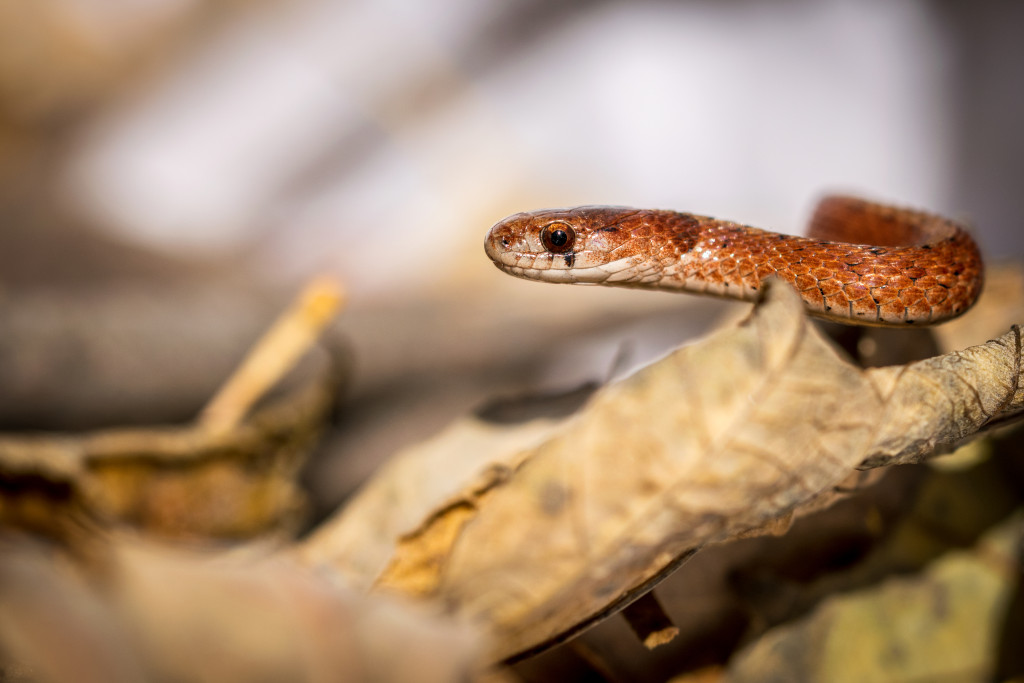
By Marissa Jensen
Nebraska is home to 29 species of native snakes with each species claiming its own unique characteristics, habits, and habitats. And for those who find themselves a little squeamish about even the mere mention of snakes, we have the perfect one to introduce you to.
The Dekay’s brownsnake (Storeria dekayi) is a non-venomous snake named in honor of the 19th-century naturalist and zoologist, Dr. James Ellsworth De Kay, who collected the first known specimen.
With an average adult size between 9 and 13 inches in length, the Dekay’s brownsnake may resemble the No. 2 pencil you hold in your hand. Due to their size, this small snake has a unique appetite. The typical diet for a Dekay’s brownsnake consists of earthworms, snails and slugs. In fact, the snake is equipped with a specialized tool: An acrodont tooth structure on the snake’s mandible allows them to remove snails from their shells before they’re consumed.
Additionally, due to their small size, the Dekay’s brownsnake falls victim to a variety of predators, including larger frogs and toads, birds and mammals. They’re quite adept at hiding and are secretive in nature, which likely helps avoid predation.
Brown, or reddish-brown in color like their namesake, Dekay’s brownsnake often has a dark head and a white or gray underbelly. Many will exhibit a light-colored stripe running down the length of their spine. This stripe may have a paired line of black dots that run along the edge on both sides. Additionally, a dark black spot is typically located underneath each eye of the snake.
This species of snake is known as viviparous (giving birth to live young) and a female may have anywhere between three and 41 young in the summer months. Newborn snakes can be as small as 4 inches in length.
Reptiles like Dekay’s brownsnake are ectothermic, meaning they rely on outside heat sources to maintain body temperature. Because of this, during the months of late fall and winter when temperatures drop and days shorten, the Dekay’s brownsnake goes through brumation to survive the cold. Brumation includes a dormant period for cold-blooded animals, such as snakes. During this time, physical activity drops off and metabolic processes slow down. Brumation is not devoid of all activity, however, as the Dekay’s brownsnake will occasionally rouse to drink or bask if the temperatures warm.
As temperatures increase and the the days lengthen, brumation comes to an end and the cycle will start all over again.
Historically, the Dekay’s brownsnake has been found primarily in the eastern region of Nebraska. However, a recent paper published by the University of Nebraska at Kearney took a closer look at the potential range extension for Dekay’s brownsnake in south-central Nebraska. Although this species was previously known to occupy 16 counties across Nebraska, recent findings added seven new counties in south-central Nebraska to the Dekay’s brownsnake range. These counties included Clay, Fillmore, Kearney, Nuckolls, Seward, Thayer and York.
The Dekay’s brownsnake can be found in woodland and shrubby habitats around streams and have been documented in ecosystems and environments such as upland grasslands and row-crop agriculture. The next time you’re out on a hike or standing in your garden, look closely. Maybe you’ll be fortunate to spot this little, secretive snake.
